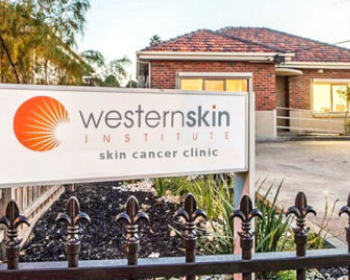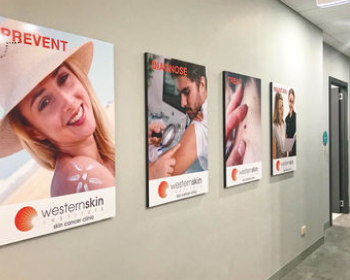Smooth PDO (polydioxanone) thread vs Thread lifting, St Albans
Western Skin Institute offers both thread lifting, and smooth PDO (polydioxanone) thread treatments.
What is the difference between thread lifting and smooth PDO thread treatments?
Thread lifting and smooth PDO thread treatments both use polydioxanone (PDO) sutures to rejuvenate the skin, but they serve different purposes. Thread lifting involves barbed PDO threads that physically lift sagging skin, especially in the midface, jawline, and neck. In contrast, smooth PDO threads have no barbs and are designed to stimulate collagen production and improve skin texture, elasticity, and tone without providing a lifting effect. While thread lifting targets structural support and contouring, smooth PDO threading is ideal for skin rejuvenation and subtle wrinkle reduction. Both treatments are minimally invasive with short downtime and long-lasting results.
What is Smooth PDO thread?
Smooth PDO (polydioxanone) thread consists of a fine needle with an absorbable polydioxanone suture. Polydioxanone suture has been used in soft tissue approximation and has a 30-year long safety track record for use in orthopaedic and cardiovascular surgery and for wound closure. It is completely absorbed by the body through hydrolysis and causes minimal tissue reaction and tissue trauma.
How does Smooth PDO thread work?
Insertion of multiple smooth PDO threads creates a support network for skin tissue. This provides an immediate visible tightening effect whilst stimulating natural collagen production within the skin. This not only stimulates skin rejuvenation, brings vitality, elasticity and brighter skin tone but also improves the appearance of acne scar, minor wrinkles, nasolabial folds, and saggy skin. The embedded threads are gradually absorbed over a period of 3-4 months via biological hydrolysis. The result is more long-lasting than other injectable treatment with minimal side effects and downtime.
What can I expect when having Smooth PDO thread treatment?
Topical anaesthetic cream will be applied for about 20 mins to treated area prior to treatment to ensure minimal discomfort. The treatment will take about 15-20mins, depending on number of threads and treatment area. Bruising, swelling and small lumps can occur, which are normal reactions to treatment. They should be resolved in about 2 weeks.
Where can I get more information about Smooth PDO thread treatment?
The Smooth PDO thread procedure will be performed by Dr Stephen Lai or other qualified practitioners at St Albans Clinic. Before booking the procedure, you will be assessed to confirm your suitability and will be informed about the treatment plan and cost involved. The procedure will take about 30-40 mins which includes preparation and treatment time.
What is Thread Lifting?
Thread lifting is a minimally invasive aesthetic technique involving insertion of multiple suspension PDO (polydioxanone) barbed sutures in the subcutaneous plane of skin. Polydioxanone is an absorbable suture material which has been used in soft tissue approximation and has a 30-year long safety track record for use in orthopaedic and cardiovascular surgery and for wound closure. It is completely absorbed by the body through hydrolysis and causes minimal tissue reaction and tissue trauma.
How does Thread Lifting work?
Insertion of multiple lifting threads with PDO barbed sutures creates a lifting effect tension along the entire length of the sutures. It helps to correct the sagging skin in ageing face by elevating the midface and hence it is particularly useful to address the nasolabial folds and marionette lines. The embedded threads are gradually absorbed over a period of 3-4 months via biological hydrolysis with surrounding fibrosis around the suture which is postulated to lead to long-lasting result even if the sutures are no longer present. The result is more long-lasting than other injectable treatment with minimal side effects and downtime.
What can I expect when having Thread Lifting?
Topical anaesthetic cream will be applied for about 15-20 mins to treated area prior to treatment to ensure minimal discomfort. A small injection of local anaesthetic will be injected into facial skin at entry point of lifting thread. After a keyhole has been punctured at entry point, a long cannula holding the lifting thread is then inserted through the keyhole and tunnelled in the subdermal plane to an area approximately 1cm beyond the fold to be corrected. The cannula is then slowly removed, leaving the lifting thread in place. On average, 2-3 lifting threads with PDO barbed sutures are needed for optimal lifting effect on each side of face.
The procedure will take about 30-40 mins. Bruising, swelling and small lumps can occur, which are normal reactions to treatment. They should be resolved in about 3-4 weeks. Given the dynamic nature of the facial muscles, relaxation or breaking of threads may rarely occur over time and this can result in asymmetry and potential needs for revision procedure.
Where can I get more information about Thread Lifting?
The Thread Lifting procedure will be performed by Dr Stephen Lai (AAAM Board Certified Aesthetic Physician) at St Albans Clinic. Before booking the procedure, you will be assessed to confirm your suitability and will be informed about the treatment plan and cost involved.
Western Skin Institute also offer acne and rosacea treatment, skin checks and laser treatments.




